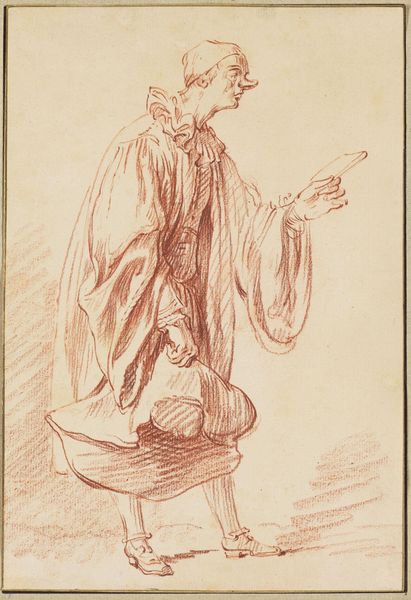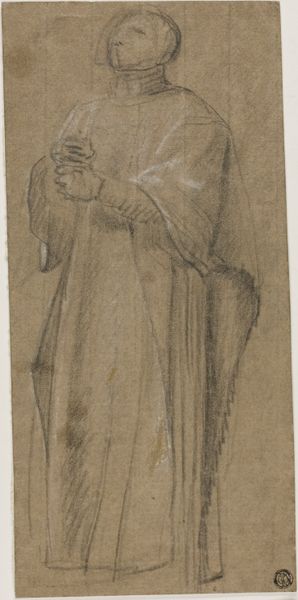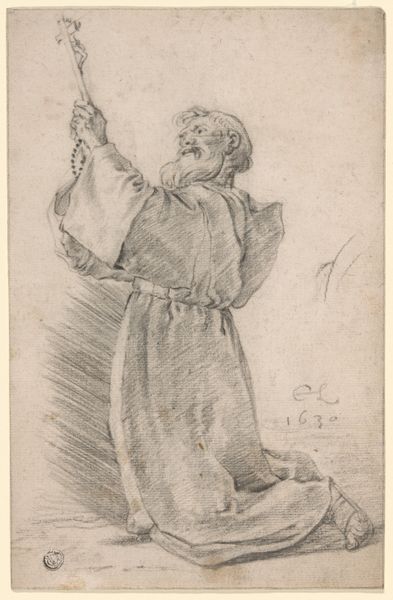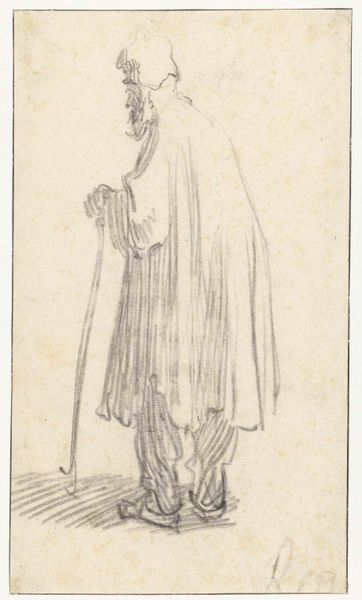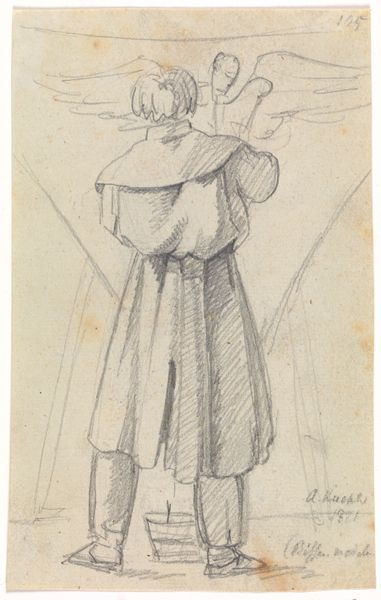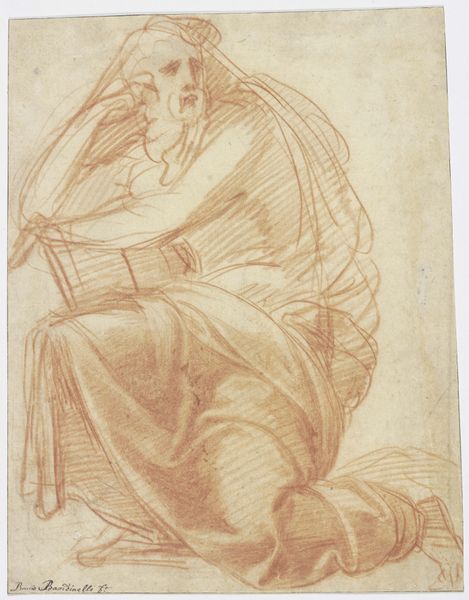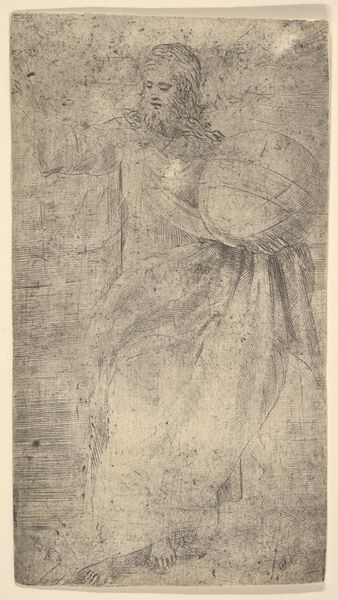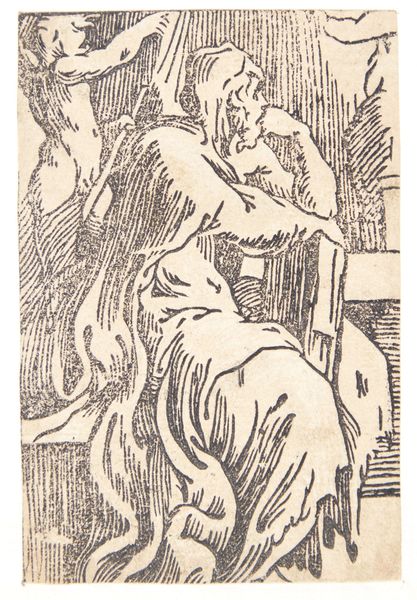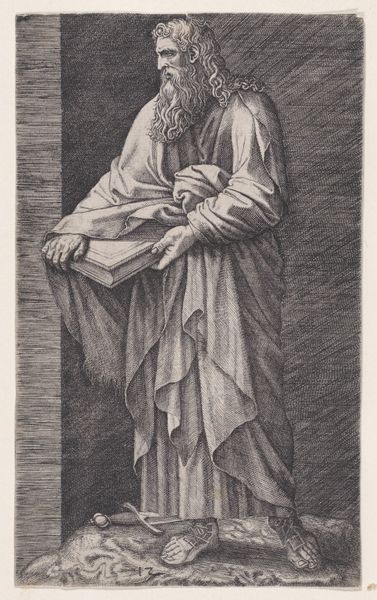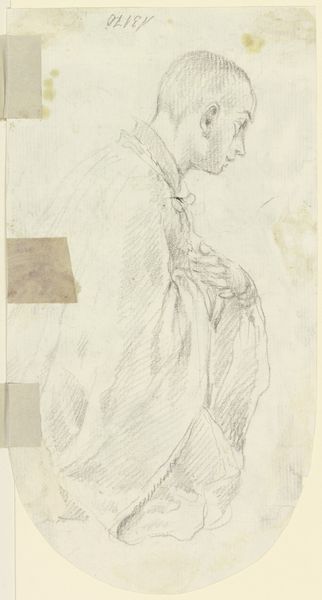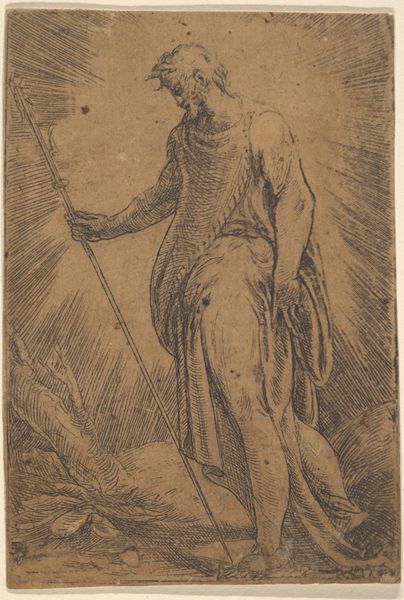
drawing, ink, pen
#
portrait
#
drawing
#
ink drawing
#
figuration
#
ink
#
line
#
pen
#
portrait drawing
#
academic-art
#
realism
Dimensions: 208 mm (height) x 135 mm (width) (bladmaal)
Curator: Looking at "Bedende Engel", created around 1897 by Poul S. Christiansen. It’s an ink and pen drawing, currently residing here at the SMK. Editor: Wow, that title translates to "Praying Angel," right? There’s something immediately fragile and yearning about it. That stark, upward gaze and those clasped hands… it’s as if she’s begging for something just out of reach. Curator: It’s interesting you pick up on the fragility. Christiansten was working during a period where artists were challenging traditional academic styles. What we have here isn’t a highly finished piece, but rather, something sketch-like and raw in its emotional intensity. Editor: It does feel so raw, like a snapshot of a very private moment. I mean, look at the loose lines – almost frantic, yet precise enough to convey such deep feeling. It reminds me of Käthe Kollwitz. What’s interesting about portraying angels like this? It does not feel very idealized, I should say. Curator: That’s precisely the point! Prior to this, angels in art were generally symbols of power, celestial messengers, paragons of beauty and strength, whereas, the art around 1890s, including in the Symbolist movement, challenged that representation. Editor: By grounding them, maybe? Giving them human emotion, vulnerabilities. Suddenly an angel isn't this untouchable being, but a fellow sufferer. The simplification – almost to the point of abstraction in parts – intensifies that emotional impact, right? Curator: Absolutely. By foregoing realistic detail, Christiansen focuses on the pure essence of longing, that feeling of reaching out into the unknown. It moves away from a straightforward religious interpretation to a universal exploration of hope and despair. Editor: Looking again, I appreciate the simplicity even more. There's nothing to distract us from the raw emotionality of the piece. That humble presentation magnifies the vulnerability; the humbleness feels incredibly sincere. Curator: That sincerity resonates beyond any specific time or religious context. You are now witnessing it too; this is what keeps viewers connected, and it is something museums should provide; relatable and honest stories about our society. Editor: So, next time I find myself grappling with my own anxieties, I can pop by for a little empathy and reminder of humanity, even, in the angels above. Thanks! Curator: Precisely. Art like this creates an empathy bridge through time.
Comments
No comments
Be the first to comment and join the conversation on the ultimate creative platform.
